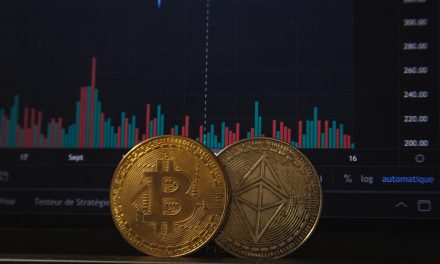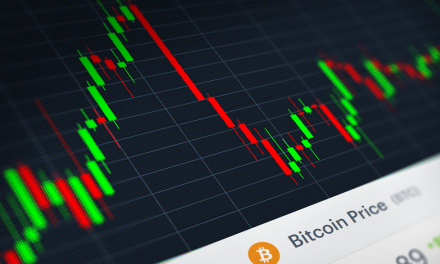SINGAPORE – “The Fed’s 75 basis point rate hike has less and less impact on the cryptocurrency market decline,” said Andrew Weiner, vice president for cryptocurrency exchange MEXC: “If you look back at the data on the rate hikes this year and the price of BTC, you will find that this statement proves true, and we should pay closer attention to comprehensive indicators such as CPI.”
|
Rate hike date announced by Fed |
3.26 |
5.4 |
6.15 |
7.27 |
9.21 |
11.2 |
|
rate hike basis |
25bp |
50bp |
75bp |
75bp |
75bp |
75bp |
|
BTC rise |
10.59 % |
-49.54 % |
-30.3 % |
13.8 % |
-9.5 % |
3.5 % |
|
Affected period |
4d |
9d |
4d |
3d |
1d |
1d |
Form: MEXC
On November 2 (UTC), Fed raised the benchmark interest rate by 75 basis points to a range of 3.75%-4%, which is 75 basis points of interest rate hikes four consecutive times. As for now, a total of 355 basis points of interest rate hikes have been accumulated in 2022.
Affected by the news, the crypto market suffered a brief setback that day. BTC fell slightly from 20796USDT to a low of 20066USDT, a decrease of 3.5%, and then slightly increased to the current 20314USDT.
Andrew made a review of this year’s Fed rate hike events.
The Federal Reserve officially began debating the issue of interest rate hikes on January 25, 2022. The core task at hand was solving the economic problems caused by the expansion of the US dollar’s liquidity in 2020.
However, the target interest rate range remained unchanged at 0-0.25% in the first quarter, and the first rate hike in 2022 was not announced until March 26. At that time, all media and institutions were worried that the Fed would raise interest rates by 50 basis points. However, the final announcement was only a 25 basis point interest rate hike. Since the result was in line with most people’s expectations, BTC shortly rose by 10.59% during the next 4 days.
But in the long run, the probability of the Fed raising interest rates was inevitable. After ten days of sideways trading, BTC began to fall from 47,199 USDT between April 5th to May 4th. The Fed then announced a new round of 50 basis points of interest rate hikes, and the funds began to decline once more. As a result, BTC experienced a new round of downward decline, which only stopped falling at 17,626 USDT on June 18 – encountering sideways fluctuation at the same time.
Although the rate hike of 75 basis points on June 15 caused BTC to drop by 30.3% for four consecutive days, June 19 was the crucial emotional inflection point. The public seemed immune to rate hikes, and the amount of capital flight became smaller. BTC also rose steadily to 24,879 USDT in the following days, with its highest gain being 41.14% during this period.
At the same time, the price of BTC started feeling the affects of the CPI. On August 12 and September 12, BTC’s price fell continuously, coinciding with the CPI announcement in the United States.
Andrew believes that, “The CPI can most accurately reflect the effectiveness of interest rate hikes. Suppose a 75-basis-point interest rate hike does not curb inflation well. In that case, the intensity of interest rate hikes will not be reduced; it may even increase the intensity of them.”
Judging from the data, between the crypto market’s price decline and the Fed rate hike, the former seems immune to the latter. Within three days of announcing 75 basis points of interest rate hikes, the Fed did not cause a new round of capital flight. From January 8th to 9th, BTC fell from 20674USDT to 17182USDT.
“Bear markets tend to be relatively fragile and prone to Lehman events due to liquidity issues, but a ‘bottom’ sometimes forms after a Lehman black swan,” says Andrew.
M-Research has written many times previously and pointed out that the entry of institutions mainly caused the crypto bull market from June 2020 to November 2021. The core reason was that institutions avoided the risk of depreciation of the US dollar by allocating BTC and ETH.
Can you boldly predict what will drive the new bull market in cryptocurrency?
Andrew said, “The previous institutional bulls were also the core catalyst for the downturn in the cryptocurrency market. Institutions started selling cryptocurrency when the Federal Reserve began implementing monetary tightening policies. The funds flowed back from the cryptocurrency market to hard currencies, such as the US dollar. At this time, it’s too early to expect a new crypto bull market, but the conditions for it are slowly forming and I recommend you pay attention to these 3 key indicators,”
- Highly leveraged institutions have completely liquidated their crypto assets due to liquidity problems, a prerequisite for the end of the bear market.
- When the Fed’s tightening monetary policy bears fruit and gradually reduces the rate of interest rate hikes, institutions will once again begin their allocation of crypto assets.
- The Ethereum ecosystem’s development and ETH’s deflation process.
Another contributing factor to the last bull market was the development of DeFi and NFT, both of which promoted the detonation of GameFi and the metaverse. Still, their development was constrained by the lack of scalability of the Ethereum network itself. However, as Arbitrum, Optimism, StarkWare, and zkSync have begun to solve this problem, it will only be a matter of time before DeFi and NFT usher in a new burst of prosperity at the application layer.
After the integration of Eth2.0, ETH began to accelerate into the deflation process. In the past 30 days, its total supply has continued to decline, with a cumulative decrease of 56955.01 pieces, worth about $88.98 million. The daily average, seven-day average, and 30-day average of ETH supply are all showing negative growth. The XEN Crypto (XEN) project alone consumed over 4491.03 ETH within seven days.
Looking back on May of this year, the issuance of the Otherdeed NFT project consumed 62,423 ETH in gas fees, accounting for about 79% of the total gas consumption of the Ethereum network for nearly 3 hours. How much will the deflation of ETH be if it were to occur now, with the ETH staking rate increasing due to the merging of Eth2.0 to PoS and with the burning mechanism of EIP1559?
If Ethereum, Layer 2, and the Fed’s monetary policy shifts stack up, it will be the best inflection point for cryptocurrencies to go from a bear market to a bull market.
Source: MEXC Global Ltd.





